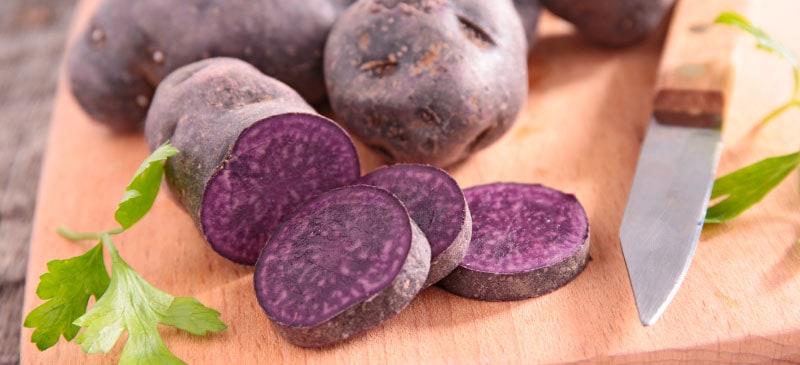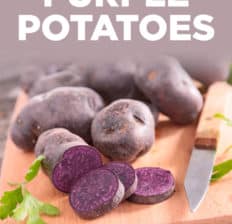This Dr. Axe content is medically reviewed or fact checked to ensure factually accurate information.
With strict editorial sourcing guidelines, we only link to academic research institutions, reputable media sites and, when research is available, medically peer-reviewed studies. Note that the numbers in parentheses (1, 2, etc.) are clickable links to these studies.
The information in our articles is NOT intended to replace a one-on-one relationship with a qualified health care professional and is not intended as medical advice.
This article is based on scientific evidence, written by experts and fact checked by our trained editorial staff. Note that the numbers in parentheses (1, 2, etc.) are clickable links to medically peer-reviewed studies.
Our team includes licensed nutritionists and dietitians, certified health education specialists, as well as certified strength and conditioning specialists, personal trainers and corrective exercise specialists. Our team aims to be not only thorough with its research, but also objective and unbiased.
The information in our articles is NOT intended to replace a one-on-one relationship with a qualified health care professional and is not intended as medical advice.
Antioxidant-Loaded Purple Potatoes: The Healthy, Versatile Carb
November 1, 2022

Purple potatoes are vibrant, versatile and nutritious, making them a must-have for any seasoned spud-lover.
Although potatoes have a reputation of causing weight gain, studies show that the type of potato you choose and how the potato is prepared could make a difference.
Instead of loading up on the french fries, potato chips or processed potato-based products, start stocking up on purple potatoes, which can help dial up the health benefits of your daily diet.
So do purple potatoes grow naturally? Are purple potatoes more nutritious than white, and what kind of recipes can you use to give this colorful veggie a try?
Keep reading for everything you need to know about this tasty tuber.
What Are Purple Potatoes?
Purple potatoes are a type of root vegetable that belong to the Solanaceae, or nightshade vegetables, family. They are closely related to other nightshades, including eggplants, tomatoes and peppers.
The purple or blue violet potato also fits into what has been called vitelotte, although it’s not necessarily violet in color.
The history of the purple potato goes back to what’s known as the purple Peruvian, which is an heirloom fingerling potato. This type of potato may have been noted as early as 1817, listed as available at the market of Les Halles.
The purple potato comes with special names, such as purple majesty, purple viking and purple Peruvian, and is usually available all year long.
These golf ball-sized potatoes are especially popular in South America, originating in Peru and Bolivia, and they can reach a slightly larger size if allowed to reach full maturity.
They have a nutty, earthy flavor and are perfect as a side dish to complement nearly any main course.
While all potatoes, including purple sweet potatoes, blue potatoes, white potatoes and yellow potatoes, are high in carbohydrates, they also contain fiber and an array of important vitamins and minerals.
In fact, take one look at the purple potatoes nutrition profile and it’s easy to see why they’re so great for improving your health.
A half cup (about 75 grams) of diced, raw purple potatoes contains the following nutrients:
- 52.5 calories
- 12 grams carbohydrates
- 1.4 grams protein
- 0.1 gram fat
- 1.3 grams fiber
- 6.5 milligrams vitamin C (11 percent DV)
- 341 milligrams potassium (10 percent DV)
- 0.1 milligrams vitamin B6 (6 percent DV)
- 45.7 milligrams phosphorus (5 percent DV)
- 0.1 milligrams copper (5 percent DV)
- 0.1 milligram manganese (5 percent DV)
- 0.1 milligram thiamine (4 percent DV)
- 0.9 milligram niacin (4 percent DV)
- 16.5 milligrams magnesium (4 percent DV)
Health Benefits
1. Healthy Alternative to Food Coloring
Potatoes, carrots and other root vegetables are used for coloring foods and often grown specifically for the natural colors industry.
This is great news, especially since they’re completely natural compared to the numerous chemical food dyes on the market that have been linked to several adverse effects on health.
The American Chemical Society notes that the purple sweet potato is chock-full of anthocyanins, which provide health benefits not found in artificial food colors.
These anthocyanins are great for naturally coloring food products, such as fruit drinks, vitamin waters, ice cream and yogurt.
What makes them unique goes beyond their color. In fact, they’re more stable options because they do not break down easily, which helps provide an added burst of color with little to no taste.
2. Help Lower and Regulate Blood Pressure
A small study presented by the American Chemical Society found that eating purple potatoes may lower blood pressure. This could be because they contain a high concentration of a phytochemical called chlorogenic acid, which has been linked to lower blood pressure in some studies.
Research shows that plain purple potatoes, baked or cooked in the microwave, were able to lower the blood pressure of subjects by 3 percent to 4 percent, which was likely due to the antioxidant behavior and phytonutrient density that these colorful gems exude.
And let’s not forget about the potassium they contain, which also aids in the regulation of blood pressure.
This makes purple potatoes and other similar foods excellent additions to any high blood pressure diet or treatment plan.
3. May Prevent Blood Clots
Blood clots, also known as thrombosis, are a leading cause of death throughout the world. Fortunately, they can be prevented, possibly by adding a little purple potato into your diet.
As noted previously, the purple potato contains chlorogenic acid. This chemical compound has been shown to break down blood clots and inhibit the enzymatic activity of procoagulant proteins and peptides.
Research published in the Journal of Biochemical and Molecular Toxicology found that chlorogenic acid delayed the development of blood clots in mice, making it a potential agent for the treatment and prevention of blood clots.

4. Jam-Packed with Antioxidants and Phytonutrients
The purple potato is loaded with antioxidants and disease-fighting phytonutrients that work together to offer amazing health benefits, such as reducing inflammation.
One of the elements within this powerful cocktail is the anthocyanin, which is what gives the potato its brilliant purple color and acts as a powerful antioxidant.
Anthocyanin pigments as medicine have been a part of folk medicine for ages and used as remedies for liver dysfunction, high blood pressure and eye disease.
5. Provide Fiber
Unfortunately, most of us don’t get enough fiber in our diets.
Why is fiber so important? One of the biggest reasons is that it helps keep things moving along smoothly through your digestive system, which can help eliminate constipation, irregularity and discomfort.
Like other veggies, purple potatoes are an awesome source of fiber, packing one gram into each half-cup serving.
Studies show that upping your intake of fiber can aid in the prevention of heart disease, stroke, high blood pressure, diabetes and digestive disorders like hemorrhoids, gastroesophageal reflux disease (GERD) and diverticulitis.
6. Great for Endurance Athletes
Another reason that insoluble fiber is so beneficial is that it can provide a time-released effect that helps endurance athletes sustain high energy levels for long periods of time. In fact, it’s not unusual to find potatoes sitting at an aid station during a long-distance race.
Runner’s World reports that, while the ever-so-famous carb-heavy pasta seems to take front stage, the potato may do a better job the day of an event by providing more energy-delivering complex carbohydrates.
Not only are potatoes super easy to prepare, but they’re easy to digest — a common concern for most athletes.
Plus, they’re loaded with electrolytes like potassium. The purple potato contains 341 milligrams of potassium per half cup serving, which is 10 percent of the daily recommended value.
How to Use and Recipes
Purple potatoes are a versatile and delicious ingredient that make an excellent addition to any meal.
Besides growing purple potatoes at home, there are several options of where to buy purple potatoes, from local farm stands to health food stores and certain supermarkets.
Even though they have a rich, vibrant violet color, their flavor is more subtle than some other potato varieties. Because of this, unlike the sweet potato that’s delicious all by itself, the purple potato is usually prepared by adding seasonings.
There are plenty of options for how to cook purple potatoes, and these tasty tubers work well as a substitute for regular potatoes in nearly any dish.
Thanks to their mild taste, they can be boiled, mashed, roasted or baked and seasoned with your choice of herbs and spices.
Keep in mind that boiling or baking is the best method versus deep frying, which kills many useful nutrients. Use a little coconut or olive oil with some salt and pepper for a delightful addition to any meal.
Here are a few tasty purple potatoes recipes that you can try out to get started:
- Roasted Purple Potatoes with Lemon, Dijon and Thyme Dressing
- Garlic Purple Mashed Potatoes
- Oven-Roasted Purple Potato Fries
Risks and Side Effects
For most people, purple potatoes can be a delicious addition to the diet. However, they are relatively high in carbohydrates and calories, which can be an important consideration for certain groups.
Although the purple potatoes glycemic index is lower than regular potatoes, eating large amounts can still impact blood sugar levels.
Therefore, if you have diabetes, you should keep consumption in moderation to help promote blood sugar control.
Purple potatoes on keto diet or other low-carb diets should also be limited. For best results, keep portion sizes small and pair with a variety of other non-starchy vegetables as part of a healthy diet.
Final Thoughts
- Purple potatoes are a type of root vegetable that belong to the nightshade family and are closely related to other veggies like eggplant, tomatoes and peppers.
- Are purple potatoes good for you? Potential benefits of purple potatoes include regulating blood pressure, preventing blood clots and providing long-lasting energy for endurance athletes.
- There are many different purple potatoes recipe options that you can experiment with to add this nutritious ingredient into your diet.
- You can easily enjoy purple potatoes mashed, baked or boiled in your favorite recipes. Alternatively, try purple potatoes roasted for a delicious substitute to deep-fried french fries.











